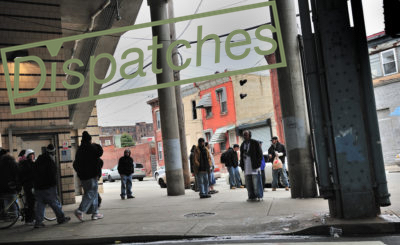Philadelphia has become ground zero for an unusual series of poisonings from heroin and/or fentanyl adulterated with a substance believed to be a synthetic cannabinoid (often generically referred to as K2). Over the weekend of September 21-22, more than 200 individuals were sickened by the potentially toxic combination, according to the Philadelphia Department of Public Health. With many episodes going unreported, the true figure is likely higher.
The outbreak, in the Kensington section of North Philly, was the second K2-related mass poisoning since the city quietly began trialing a new Opioid Overdose Notification system this summer. According to a city spokesperson, the text- and email-based system is designed to push out real-time notifications of overdose or poisoning clusters to first responders and members of the harm reduction community, and was inspired by Baltimore’s Bad Batch alert system, which was introduced in August 2017. The system was fully operational by Friday Sept. 21 when an alert went out identifying three branded stamp bags of dope that are believed responsible for the cluster of poisonings.
[P]atients are responsive to naloxone but are exhibiting atypical symptoms upon awakening.
“Staff in area Emergency Departments have indicated that patients are responsive to naloxone but are exhibiting atypical symptoms upon awakening,” read the alert. “These include extreme agitation and uncontrolled vomiting. While testing has not yet been confirmed, we are anticipating involvement of K2 and heroin and/or fentanyl.”
As I reported in June, IV drug users first began reporting feeling effects they attributed to synthetic cannabinoids after injecting heroin around the start of the year.
By summer the city experienced its first mass poisoning. In late July, nearly 200 people fell ill after using heroin purchased in a high-volume open-air drug market near the major intersection of Kensington and Allegheny. Victims exhibited unusual reactions to the overdose reversal drug naloxone, indicating the presence of an adulterant.
First responders initially suspected an anticholinergic like Scopolamine—a motion sickness drug that poisoned hundreds of drug users in New York, Camden and Philadelphia in 1996; but testing later identified the particularly powerful synthetic cannabinoid 4F-ADB as the culprit.
Synthetic cannabinoids are now in their eighth generation since “Spice” first began turning up in gas stations and head shops in 2004, marketed as a legal high. There are now estimated to be hundreds of potential variations, which keep getting more powerful and toxic.
Fortunately the tainted heroin has not led to a rise in fatalities. At least not yet. But the terrifying trend has caught drug users, public health officials and even police off guard.
“Even a lot of people in the narcotics division still look at it as the shit they were selling in corner stores five years ago,” said a member of Philadelphia’s Narcotics Strike Force, on condition of anonymity. “To be honest I can’t quite figure it out. Cross contamination is certainly a possibility. Though it’s still in the back of my mind that whatever is going on is people trying to experiment to see if it will catch on.”
Whatever the reason, the events over the past two months in Philly demonstrate that with every impediment law enforcement erects to stanch the flow of mood altering substances, there’s always a more dangerous workaround just around the corner.
Photo: intersection of Kensington and Somerset streets, in the Kensington area of Philadelphia via Flickr/Mario C. Russell.





Show Comments